Azerbaijani Beverages: Basic Overview
Common Ingredients
Common Preparing Methods
Drinking Etiquette
Influence and Fusion
Azerbaijani Beverages: Origin and Region
Cuisine
Culinary Region
Classifications of Azerbaijani Beverages
-
Alcoholic Beverages
Azerbaijani non-alcoholic drinks include black tea, a robust tea served in pear-shaped glasses with sugar or jam, brewed for a rich flavor and enjoyed year-round.
Ayran, a tangy yogurt drink, is refreshing and popular, especially in summer.
Sherbet, a sweet fruit juice drink, and compote, a fruit-simmered drink, are both enjoyed cold and often served on festive occasions.
-
Non-alcoholic Beverages
Azerbaijani alcoholic drinks feature locally produced wines from diverse grape varieties, offering rich and fruity flavors, and are popular at celebrations.
Beer, including traditional Buza and modern brands like Xirdalan, is widely enjoyed. Vodka, known locally as “araq,” is a strong spirit sometimes infused with local flavors like honey or herbs
Azerbaijani beverages are drinks from Azerbaijan, a country nestled at the confluence of Eastern Europe and the Middle East, and reflect rich cultural influences from Persia, Turkey, and Russia.
These beverages range from sweet and fruity to tangy and slightly bitter, crafted through brewing, fermenting, and distilling.
Black tea, the national drink, is commonly brewed in a samovar and served in armudu glasses, symbolizing hospitality. Another favorite is sherbet, a sweet fruit juice drink, perfect for weddings and gatherings.
In terms of alcoholic beverages, wine and vodka stand out. Ancient winemaking traditions have produced unique varieties like Matrasa, while vodka, a nod to Soviet times, remains a celebration staple.
Join me on a journey to discover Azerbaijan’s most iconic drinks. Read until the end for a comprehensive overview of the nation’s beverages.
Start exploring now!
11 Best Azerbaijani Beverages
Here are 11 of the best Azerbaijani beverages, including both alcoholic and non-alcoholic options, from national and traditional drinks to popular street beverages. As you read, feel free to use the filter system to quickly find your favorites.
Black Tea
- Non-Alcoholic
- National
- Traditional
Black tea, or “çay,” is a beloved national beverage in Azerbaijan. This strong, robust tea is typically served in small, pear-shaped glasses called armudu and is often sweetened with sugar cubes or jams.
Brewed using a traditional two-pot method for a rich, concentrated flavor, Azerbaijani tea can also be infused with herbs like thyme, mint, or rose petals.
You’ll find çay enjoyed throughout the year, at any time of day, especially during social events, weddings, and the Nowruz festival. Its influence has spread beyond Azerbaijan, making it popular across the Caucasus and the Middle East.
Ayran
- Non-Alcoholic
- Street Beverages
- Traditional
Ayran is a refreshing, tangy drink perfect for beating the heat. Made by blending yogurt with cold water and a pinch of salt, it has a smooth, creamy texture and a slightly salty taste that pairs wonderfully with spicy and rich dishes.
While Ayran is enjoyed year-round, it’s particularly popular in the summer, often served at outdoor gatherings and picnics. It’s sometimes mixed with herbs like mint or dill for an extra burst of freshness.
This beloved drink is also a hit in Turkey, Iran, and other parts of the Middle East and Central Asia.
Sherbet
- Non-Alcoholic
- Traditional
Sherbet, or “şərbət,” is a traditional Azerbaijani drink made from sugar, lemon, saffron, mint, basil, fruits, and berries. Its sweet, aromatic flavor and light, refreshing texture make it perfect for warm weather.
Sherbet is a staple at weddings and special events, usually paired with traditional dishes like pilaf and dolma. Beloved in Azerbaijan, Iran, and Turkey, sherbet is known for its soothing and revitalizing properties.
Compote
- Non-Alcoholic
- Traditional
Compote, or kompot, is a common Azerbaijani drink made by simmering fresh or dried fruits with sugar. This sweet, flavorful beverage can be enjoyed hot or cold.
Loved year-round, it is often served at breakfast or as a refreshing drink throughout the day, especially in summer when fresh fruits are abundant.
Popular variations of compote in Azerbaijan include apple-cinnamon, cherry-plum, and mixed berry. It is a staple at Azerbaijani festive tables, particularly during family gatherings and holidays like Novruz Bayram.
Fruit Juices
- Non-Alcoholic
- Street Beverages
Azerbaijani fruit juices, commonly made from pomegranates, cherries, and plums, are loved for their refreshing, natural flavors and rich vitamin content. These juices range from sweet to tart, with pomegranate offering a deep tang and cherry a sweet-sour balance.
Enjoyed year-round, they are perfect for breakfast or a refreshing summer drink. They also play a key role in celebrations like Novruz Bayram. Their popularity extends beyond Azerbaijan to regions like Iran and Turkey.
Rose Sherbet
- Non-Alcoholic
- Street Beverages
- Traditional
Rose sherbet, or gülab, is a traditional Azerbaijani drink made from rose petals, water, and sugar. With its delicate floral taste and light sweetness, this exotic beverage is cherished for its soothing properties and aromatic fragrance.
Enjoyed cold, rose sherbet is perfect for hot summer and is often served at special occasions like weddings and Novruz Bayram. Variations include jasmine or saffron infusions, adding complexity to the drink.
Popular in the Middle East and South Asia, Gülab is refreshing at any time, especially on warm afternoons.
Azerbaijani Wine
- Alcoholic
- Traditional
Azerbaijani wine, a traditional beverage, offers diverse flavors from indigenous grape varieties and diverse terroirs. Azerbaijani wines often feature rich, fruity notes, well-balanced acidity, and a smooth finish.
Enjoyed year-round, Azerbaijani wine pairs perfectly with the hearty flavors of local cuisine and is a staple at celebrations like weddings and Novruz Bayram.
The industry has grown significantly, with wines gaining popularity in international markets, particularly Russia, Georgia, and Europe.
Notable Azerbaijani wines include Madrasa, a robust red; Shirvanshah, a floral and fruity white; and Karabakh, a red that reflects the rich terroir of the Karabakh region.
Vodka
- Alcoholic
- National
Vodka, or “araq,” is a vital part of Azerbaijani culture. This clear, strong spirit is usually made from grains or potatoes, resulting in a smooth and pure drink. In Azerbaijan, you can find Araq infused with local flavors like honey, herbs, or fruit, giving it a unique twist.
Vodka is popular not only in Azerbaijan but also in nearby regions like the Caucasus and Central Asia. It’s enjoyed year-round, especially during dinners and social gatherings, and is a favorite at weddings and festive events.
Sumac Juice
- Non-Alcoholic
- Traditional
Sumac juice, or Sumac-ade, is a traditional Azerbaijani drink from sumac berries. Known for its tangy, citrus-like flavor and tart undertone, it resembles lemonade and is smooth and refreshing, perfect for hot summer days.
To prepare sumac juice, sumac berries are soaked in cold water, crushed to release their tart flavors, and then strained to remove solids. Also enjoyed in the Middle East and Mediterranean, sumac juice is commonly served during lunch or as a refreshing drink throughout the day.
Buza
- Non-Alcoholic
- Street Beverages
- Traditional
Buza, or boza, is a traditional Azerbaijani drink from fermented grains like millet, barley, or wheat. It has a thick, creamy texture and a slightly sweet, tangy flavor.
The grains are cooked and fermented, with sugar or honey sometimes added for extra sweetness. Chilled, buza is a nutritious, energy-boosting drink, popular during colder months for its rich, hearty taste.
Buza is part of the traditional culinary heritage, enjoyed in Azerbaijan and throughout the Caucasus, Central Asia, and Eastern Europe. Often served at breakfast or as a snack, it is especially favored in winter and is a common feature at family gatherings and social events.
Azerbaijani Beer
- Alcoholic
- National
- Street Beverages
Azerbaijani beer is a key part of the country’s drinking culture, with Xirdalan Lager being the favorite. This golden beer has a crisp, refreshing taste, with grainy malts, a hint of honey, and a subtly bitter finish.
Afsana, an American Pale Lager, offers a mild, sweet flavor and a light to medium body, while NZS Premium is a pilsner known for its citrusy notes and crisp finish.
These beers are enjoyed year-round, especially during social gatherings. Widely available in Baku’s pubs, clubs, and restaurants, they are popular among locals and tourists alike.
What Are the Key Features of Azerbaijani Beverages?
Here are the 4 key features of Azerbaijani beverages:
Ingredients
Azerbaijani beverages commonly use natural ingredients such as pomegranates, mint, and saffron. This reflects influences from Middle Eastern drink varieties, particularly drinks from Iran and Turkish beverage offerings, where these natural ingredients are widely used for their rich flavors and vibrant colors.
Preparation Methods
Traditional beverages are often prepared by boiling, steeping, or fermenting. For example, black tea is brewed in a samovar (a special metal urn), a method influenced by Russian beverage assortments and Central Asian cultures.
Drinking Culture
Tea, especially black tea, is central to Azerbaijani social life and hospitality. It is typically served in pear-shaped glasses called armudu, often accompanied by sugar cubes, lemon, and sweets. Tea houses, known as chaykhanas, are popular social spots, particularly for men.
Pairing with Dishes
Beverages are often paired with local Azerbaijani dishes. Ayran, for instance, complements qutab, a savory stuffed flatbread. Black tea is typically served after meals and with desserts, breads, pastries, or fruit preserves.
Have you tried any Azerbaijani beverages yet? Let me know your favorites! Explore more unique drinks from around the world on the site and keep your taste buds excited.




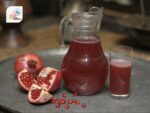





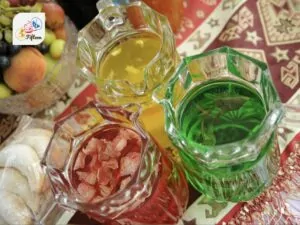
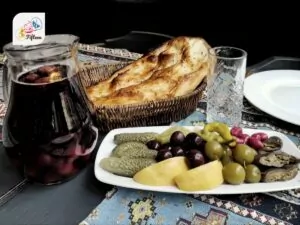
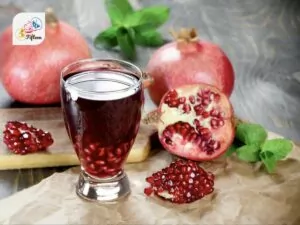
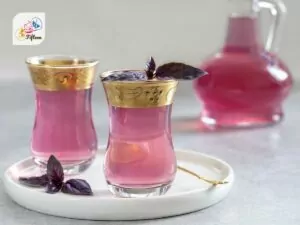






Jamie Scott
Editor in Chief, Senior Content Writer
Expertise
Home Cooking, Meal Planning, Recipe Development, Baking and Pastry, Food Editor, Cooking-video Maker, Western Food Evaluation Expert
Education
Le Cordon Bleu College of Culinary Arts
Local Community College, New York, NY
Jamie Scott is a skilled culinary expert and content creator specializing in Western cuisine. With over 15 years in the culinary field and formal training from Le Cordon Bleu, Paris, Jamie deeply understands how to blend nutrition with delicious flavors. His passion for cooking matches his commitment to making healthy eating accessible and enjoyable.
On Fifteen.net, Jamie brings a fresh perspective to classic dishes and beverages, offering readers insightful recipes, cooking tips, and a fresh view on meal planning that emphasizes taste, health, and simplicity.